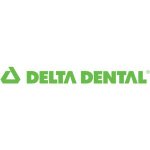The most important question about dental care is, "Is it worth paying the premiums?" Because plans and pricing vary, we cannot give you an exact value statement on any of the insurance companies we reviewed. The best we can do is calculate an average to give you an indication. Therefore, we looked at policies for three situations: a single non-smoking woman in her 40s, a mother with one child, and a mother with two. Next, we priced out standard preventative care for each of these cases in 10 different zip codes. Finally, we priced plans in those zip codes to see if you would save money purchasing the insurance or just paying for preventative procedures outright.
Overall, Delta Dental offered some of the best value for your insurance dollar, with an average savings of around 45 percent. The value was greater for family plans. These savings only take into consideration preventative maintenance: two exams, cleanings and bitewing X-rays per year. If you have other work done, such as fillings or root canals, you may see more savings. Naturally, the value of an individual plan varies depending on your state, your family situation and which plan you choose.
One advantage Delta Dental has that none of the other dental insurance companies we reviewed is that several of its plans dictate a maximum out-of-pocket expense. For example, a plan may specify that you pay no more than $250 for a root canal. Most dental insurance companies list a percentage rather than a set amount. Delta Dental's approach makes it easy to budget your dental work so you know what's expected of you.
Some aspects of Delta Dental's website were confusing. For example, there are some states listed where you can't purchase Delta Dental, but you can't tell from Delta's interactive map. All the states and Puerto Rico are shown in green, indicating that you can get coverage. However, when we clicked on some of the states, we received a notice that Delta Dental does not provide dental insurance for that state. In addition, if a state is covered, it sends you to a different website, sometimes without the Delta Dental name, which can lead you to think you've been misdirected. For example, when you click on Alaska, it not only takes you to Moda Health, Delta Dental's provider in Alaska, but the site also looks like a general healthcare site and not specifically a dental site, and it directs you to pick your state again.
Delta Dental has over 140,000 dentists in its national network, which is about average for the companies we reviewed. Many of its plans offer coverage for out-of network doctors. Out-of-network doctors may charge more for procedures, but if you already have a dentist you trust and want to stay with him or her, it might be worth the added expense.
If you get a Delta Dental policy, you can manage it online through the company's secure portal. This company also offers a mobile app, which is a great convenience if you want to take care of something right in the doctor's office so you don't forget later. It pays directly to the dentist, an additional convenience for you.
Variety is a strongpoint for Delta Dental. It offers several plans that allow you to find the one that best fits your needs and budget. Some of the plan choices include how much your deductible is, the maximum payout in a year, and the waiting period. For example, if you chip a tooth shortly after purchasing a policy, you may have to wait several months before Delta Dental helps pay for its repair. Nearly all dental insurance companies have a waiting period for basic or major procedures.
It allows for two cleanings a year and bitewing X-rays twice a year. These standard X-rays show tooth decay. One standout of this dental insurance agency is that some of its plans let you get full mouth X-rays once every two years, which is more frequent than nearly all of the providers we reviewed. Full mouth X-rays are important for detecting issues that happen below the gumline, including tumors or cysts. If you have a family history of mouth and jaw issues, or if you smoke or chew tobacco, this might be an issue to consider when selecting a plan through Delta Dental and something to check in general with other dental plans.
Another important issue, particularly for children, is tooth sealants. These are plastic coatings that cover the grooves of the teeth to prevent cavities. They are usually done on adult molars. Delta Dental may partly compensate for this procedure for children up to 16 years old. This is the average cutoff age for most dental insurance companies. Some of Delta Dental's plans cover orthodontics, too, an important consideration if your children may need braces.
Delta Dental is the best dental insurance company because of its variety of plans, the depth of its coverage and the many convenience features it has. Of special note are that it sets a maximum price you pay for procedures rather than reimbursing a percentage. In addition, some plans partly pay for full mouth X-rays every two years. Although it does not cover every state in the U.S., it has wide coverage and is well worth looking into for dental health care.





